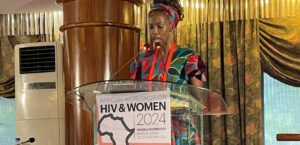There’s a comeback of sexually transmitted infections (STIs) in South Africa and around the world. The Gauteng Department of Health recently reported an increase of newly acquired STIs, in particular gonorrhoea and chlamydia. This spike in cases call for management guidelines and awareness programmes to be reviewed, reports Ufrieda Ho.
A rise in reported cases of sexually transmitted infections in Gauteng in 2023 is a wake-up call that control and management strategies are not keeping pace with the growing disease burden in South Africa’s most populous province.
“The Gauteng information confirms the rise in STIs that we are seeing in South Africa and across the world, including in the United States and Canada,” said Dr Nomathemba Chandiwana, a director and principal scientist at Ezintsha Research Centre at Wits University. She is also a co-author of the 2022 guidelines on the management of sexually transmitted infections produced by the Southern Africa HIV Clinicians Society.
Chandiwana said any increase in STIs should raise alarms because it means “we simply don’t have control over the things we thought we had under control”.
The World Health Organization (WHO) in 2022 noted that countries reported low coverage for preventive, testing and treatment services related to STIs, because of Covid-19 lockdown restrictions. The WHO confirmed that this had led to a “resurgence of STIs and the emergence of non-classical STIs [such as Shigella sonnei, hepatitis A, Neisseria meningitidis, Zika and Ebola] globally”. It also reported that currently more than 1 million new STIs are acquired around the world each day “posing a significant global health challenge”.
Since the middle of 2023, the WHO has pushed for low-cost point of care tests to be more readily available in low and middle income countries, saying this would improve screening and diagnosis, data collection and make STI services more effective. South Africa has not made such tests accessible, still relying on a syndromic approach, which is clinical diagnosis made by assessing a patient’s symptoms and other visible signs.



